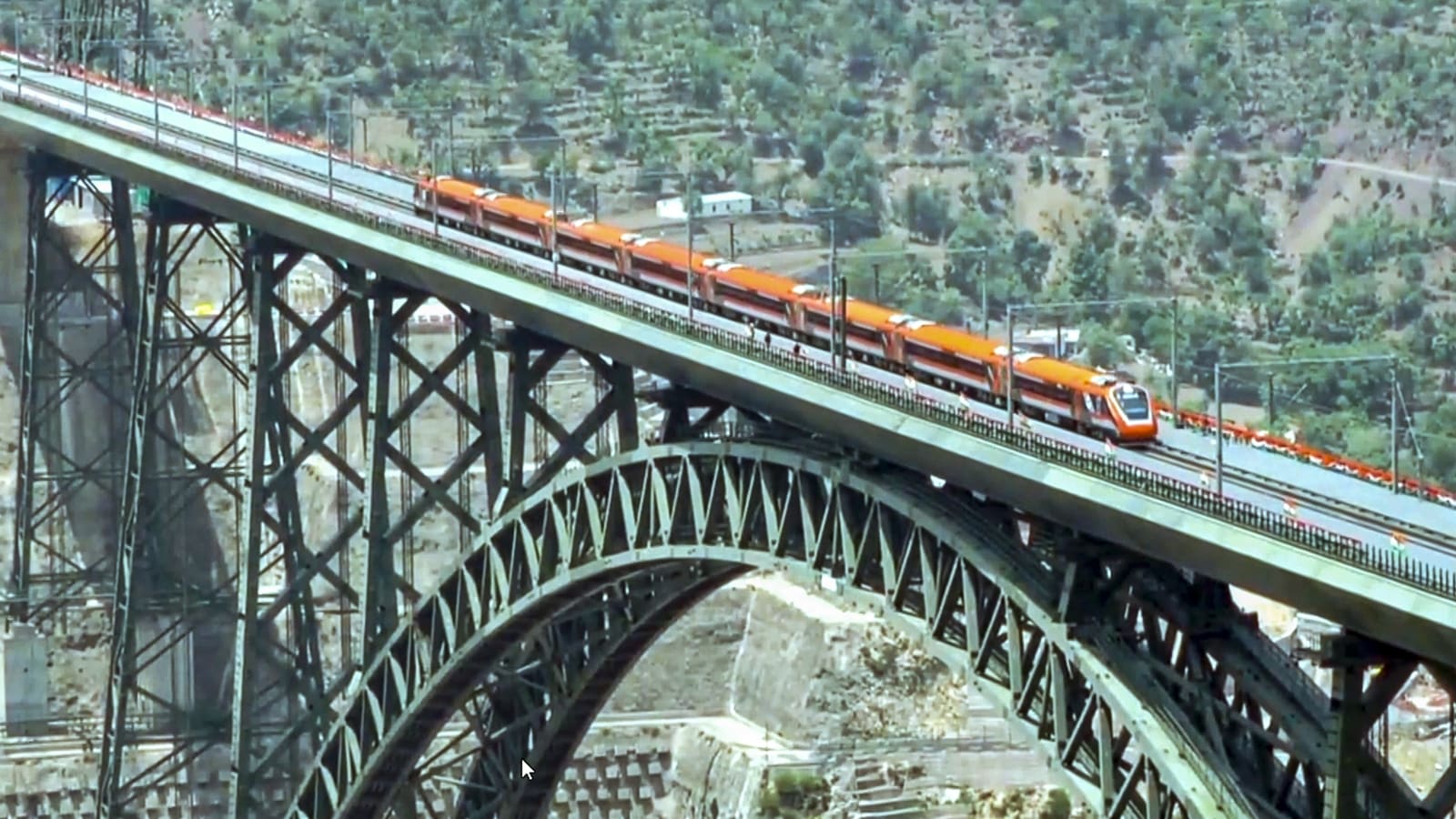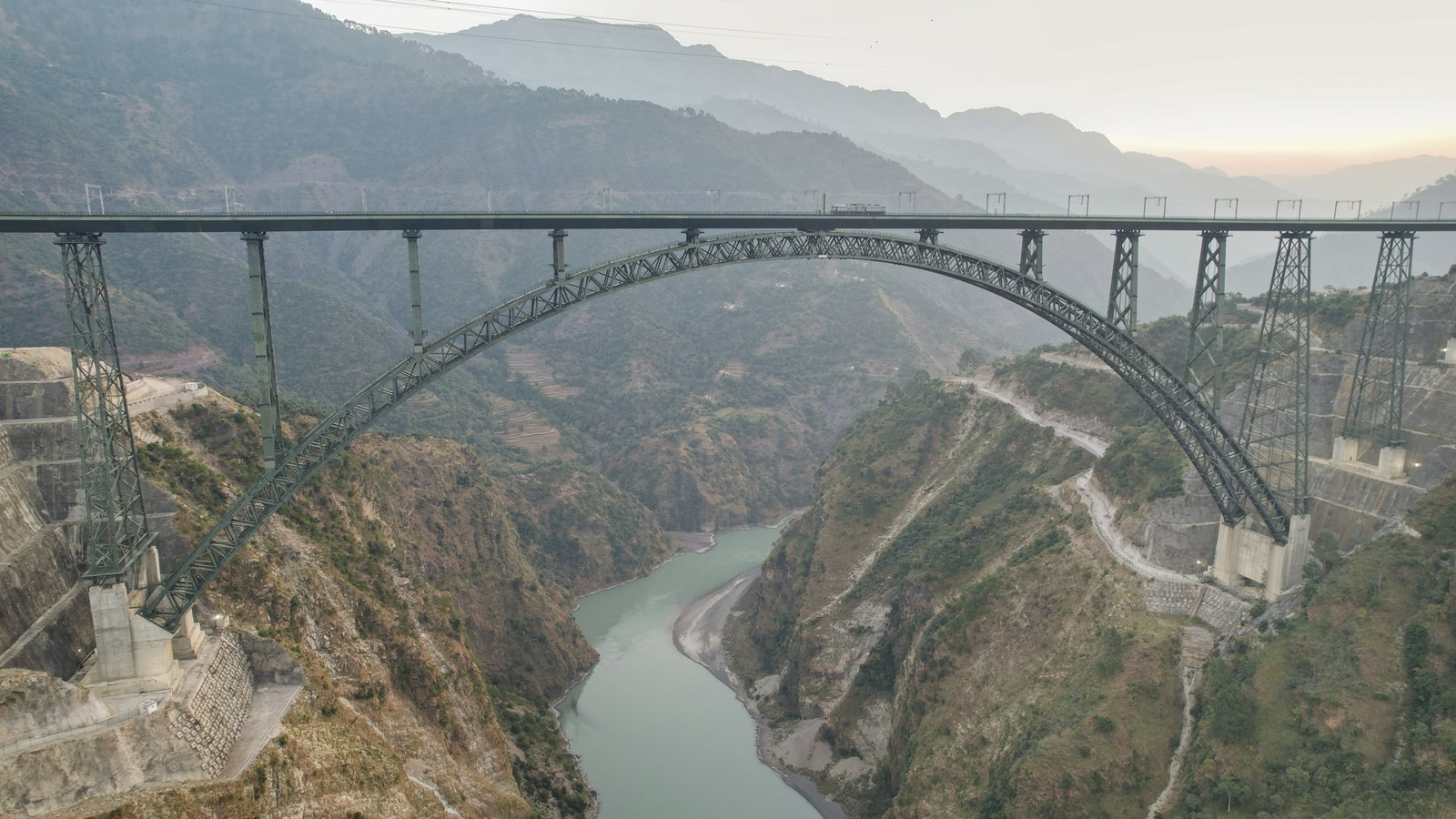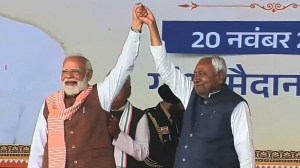Katra rail link: Magnitude of Chenab Railway Bridge hits when you see it in real, says IISc expert
The Chenab bridge remains one of the highest points in the career of Madhavi Latha G, a professor of civil engineering at Indian Institute of Science (IISc), Bengaluru.
 Madhavi Latha G, a civil engineering professor at IISc, Bengaluru, worked on Chenab bridge project for 17 years.
Madhavi Latha G, a civil engineering professor at IISc, Bengaluru, worked on Chenab bridge project for 17 years.They say one cannot erect a great building on a weak foundation. And definitely not, when it’s the world’s highest railway bridge — now a distinction given to the Chenab Railway Bridge — inaugurated by Prime Minister Narendra Modi on Friday.
The Chenab bridge remains one of the highest points in the career of Madhavi Latha G, a professor of civil engineering at Indian Institute of Science (IISc), Bengaluru. Latha worked on the project for 17 years — from 2005, shortly after joining IISc, to 2022, when she took her family to the site to have a look at the almost-completed bridge.
“Working on this project has been an experience of a lifetime,” Latha, 54, told The Indian Express. A civil engineering graduate from Jawaharlal Nehru Technological University in Kakinada, Latha went on to pursue her MTech from NIT Warangal and a PhD from IIT Madras, before landing a job as assistant professor at IIT Guwahati in 2003. After a year, she moved to IISc, where she got assigned to this project.
The Chenab Railway Bridge is a steel-and-concrete structure extending 1,315 m across the river gorge. It consists of a 530-metre-long approach bridge and a 785-metre-long deck arch bridge (the part on which vehicles ply). The steel structure can endure extreme weather conditions, including temperatures as low as -20 degrees Celsius. It can also withstand wind speed of 220 km/hr, which is equivalent to winds associated with a super cyclone.
 A Vande Bharat train crosses the newly inaugurated Chenab rail bridge in J&K’s Reasi district, Friday. This is the first rail link between the Valley and Jammu region. (PTI)
A Vande Bharat train crosses the newly inaugurated Chenab rail bridge in J&K’s Reasi district, Friday. This is the first rail link between the Valley and Jammu region. (PTI)
The region falls under seismic zone IV and the proposed bridge had to have the ability to withstand earthquakes of magnitude up to 8 on the Richter scale. Young mountains with rocky and steep slopes, fractures and joints meant that the civil engineers had to first prepare the ground so that the strong foundation could be laid.
“The region is geotechnically and geologically challenging and close to the boundary where the Himalayas started forming,” Latha said.
As the joints were found dipping towards the valley, the possibility of potential rock slides and slope slides were high, so her design was to fix these from sliding.
“Any slope is standing against gravity and it will always be vulnerable to slide off. This is the major instability in such terrains. Mountain formation is an outcome of tectonic activities and since these mountains are still young and continuously evolving, there are inherent discontinuities, joints, separations,” she said, describing the site where the bridge now stands.
Stitching together loose rock fragments, fixing slopes into the deep Chenab valley and stabilising the ground in a highly active seismic zone to lay the bridge’s foundation was the task at her hand. She was primarily responsible for designing protection for the bridge’s foundation.
 The highest railway arch bridge in the world, soars 359 metres above the Chenab riverbed, its central arch spanning 467 metres.
The highest railway arch bridge in the world, soars 359 metres above the Chenab riverbed, its central arch spanning 467 metres.
“While designing, we had to consider the many joints present within the slopes which posed a threat of making the ground unstable, in particular if there was seismic activity. In order to make the bridge quake-resistant, we had to first stabilise these slopes where I was intensely involved,” Madhavi Latha said.
“To stabilise the slope we used cement grouts, so that loose rock fragments, if any, could be bonded together. In addition, we used steel rock anchors to stitch all these joints and connect these fragments,” she explained.
Madhavi Latha said at one point her professional skills were required nearly 24×7, giving her no time to rest or sleep.
“At a particular slope cutting, I remember spending sleepless nights as my inputs were required at every stage. Ferrying people and machinery to such altitudes makes the everyday work very expensive,” she said.
Her last visit to the site with family in 2022 was a big revelation. “Images cannot do justice, the magnitude of the bridge hits when one sees it in real,” she said.







